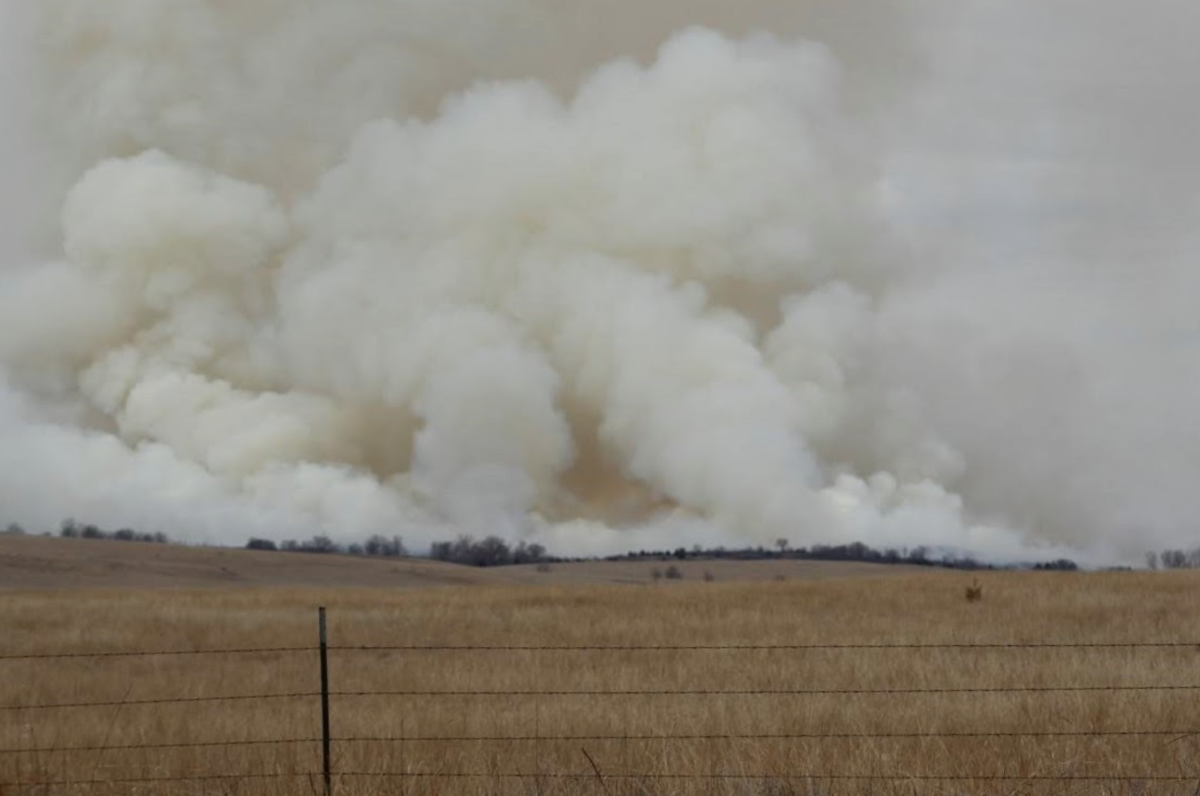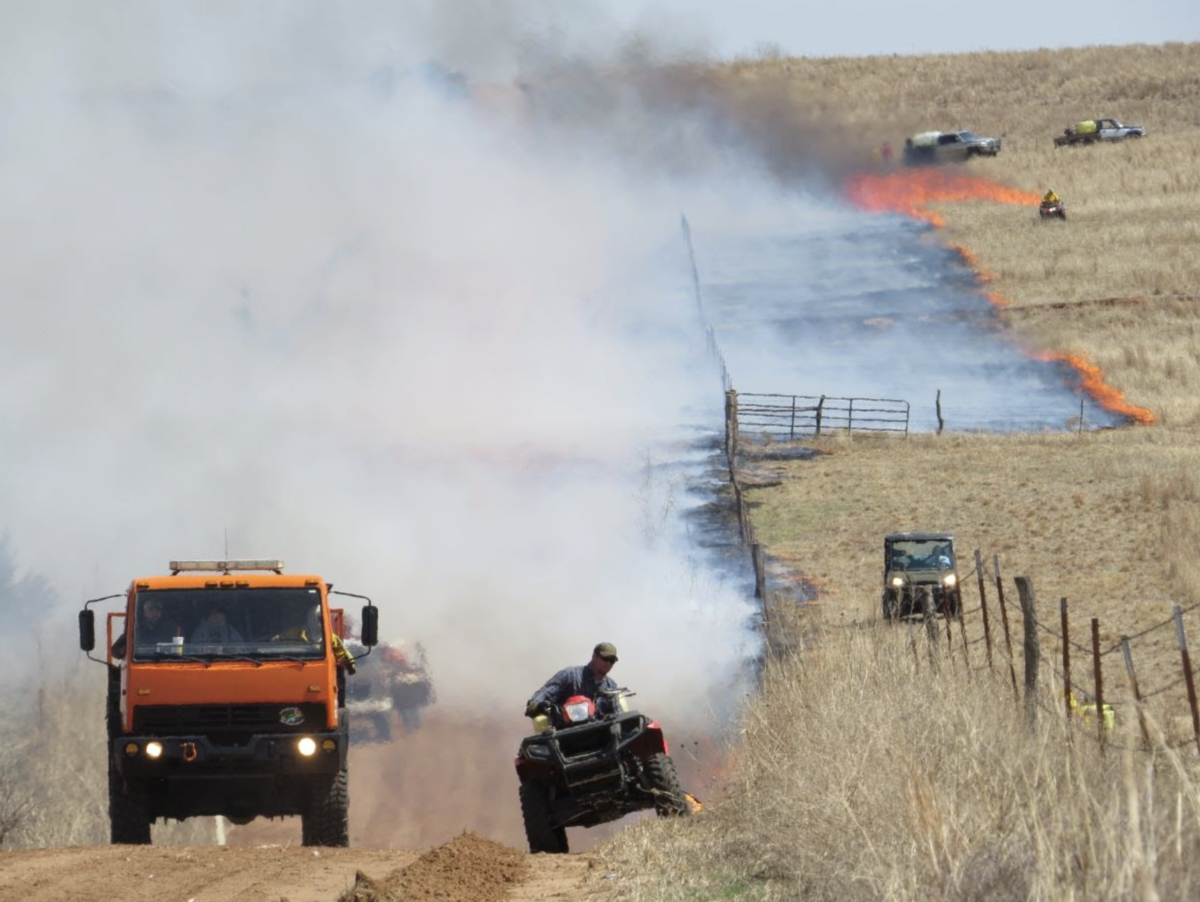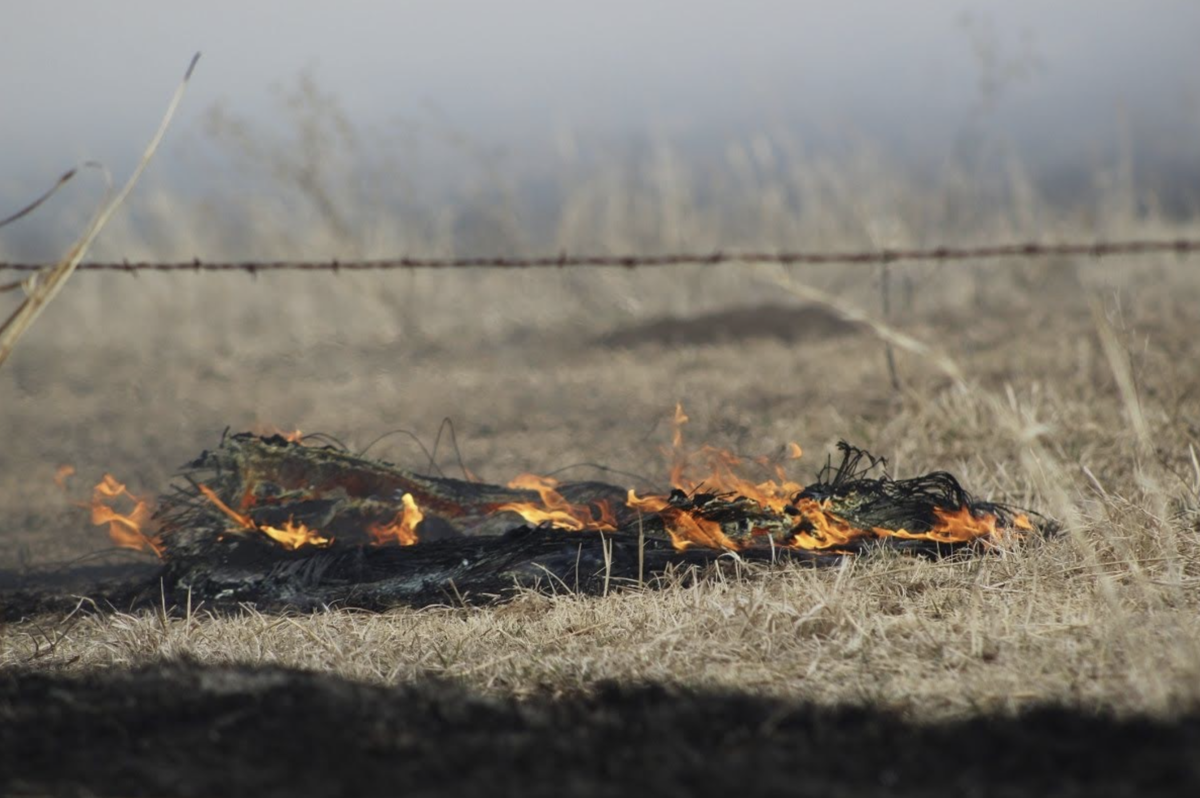Prescribed Burning
Stay in touch and subscribe to our newsletter.
As a retired Rangeland Management Specialist with Natural Resources Conservation Service (NRCS), I stress the significance of prescribed burning; however, I also understand the hesitation about the use of fire as a management strategy. I now work with Kansas Grazing Lands Coalition (KGLC) to educate the public about the realities of fire and its importance in the management of our lands. Part of my role with KGLC also encompasses writing detailed prescribed burning and grazing plans. It is my hope that through this article, I can help you to understand the goals of prescribed burning and how to get in contact with a prescribed burn specialist.
The Natural Ecosystem
The natural process of evolution for a native plant community is affected by three primary drivers: fire, grazing, and weather. Fire is an important management tool for controlling woody invasive species, reducing grazing distribution problems, improve grazing animal performance, and regenerating forage. Prairie landscapes have diminished over time through fragmentation, urban build up, farming practices, invasive species, and woody encroachment. It is our job as stewards of the land to care for our native areas and encourage effective and safe management practices.
Native prairie is not meant to have many trees, and it is easy to underestimate the impact that invasive woody species can have on the environment. Too large of tree canopies can shade the grasses which can then lead to major effects on the natural ecosystem, including the plant community, hydrology, soil, and increased erosion. These woody species can eventually dominate a plant community if not controlled.

Prescribed Burning in Practice
Wildfires used to roar across the prairie to naturally control or prevent these issues. So, when I’m asked, “Is prescribed burning necessary?” my answer is YES, but it’s not used in the same manner everywhere. Prescribed burning is used in East Kansas and the tallgrass prairie frequently and even annually. As you move towards the west mixed grass areas, fire is utilized every 5-10 years to control invasive species. Even further west in the short grass prairie, fire is used significantly less—around 10-15 years between burns. If prescribed burning is not utilized, rangeland can become overgrown with certain species such as Eastern Red Cedar and be a fire hazard.
The use of fire as a management practice is not randomized. It is a prescription based on the needs of the plant community and the goals of the landowner. The first question to ask when considering implementing a prescribed burn plan is, “How will this benefit the ecosystem?”
The landscape must be analyzed prior to creating a prescribed burn plan. A specialist will collect data to determine the appropriate time for burning and how frequently you should burn a specific area. The need for management by fire varies based on moisture and precipitation, types of plant communities, diversity in the plant community, the presence of invasive species, and other specific goals. The process of analyzing and preparing the land for burning can take months to years depending on the site. Preparing the area is crucial, as it impacts the effectiveness and safeness of the burn.
On the day of the burn, the prescription should be followed, the equipment should be present, and all helpers should know the plan and their specific role. Communication between helpers is essential for an efficient burn. The person in charge of the burn should utilize discernment to analyze the weather conditions. A burn should only be applied when conditions are within the prescription and the outcome is controlled. Factors to consider on the day of the burn include air quality, wind direction and intensity, humidity levels, and the safety of others in the area and beyond (smoke management plan).

Resources
I think most of the anxiety surrounding the use of fire comes from a previous negative experience, an individuals’ lack of familiarity or from stories of fire sweeping across the plains, especially with the damage from recent wildfires. However—let me reiterate—prescribed burning helps minimize the threat of damaging wildfires because it controls the fuel source for wildfires. A prescribed burning plan outlines the proper procedures to burn in a controlled environment and covers possible risks including weather conditions, fuel source amount, and timing of application.
Your local prescribed burn association is an excellent resource to utilize if you are implementing a prescribed burn plan or want additional tips. Across the nation, these groups are made up of experienced individuals who pool their knowledge and skills to help plan and accomplish prescribed burning in their area. Their members have common goals and foster a neighborly bond that you can count on.
KGLC and NRCS work to publicly educate about the use and importance of fire for our native prairies and rangeland, address concerns and ease anxiety around burning, and create and help implement prescribed burning plans. Visit kglc.org or contact your local NRCS office for more information and to get in contact with a prescribed burn specialist.
*Partially funded by USDA-NRCS agreement with National Grazing Lands Coalition https://www.grazinglands.org/.

